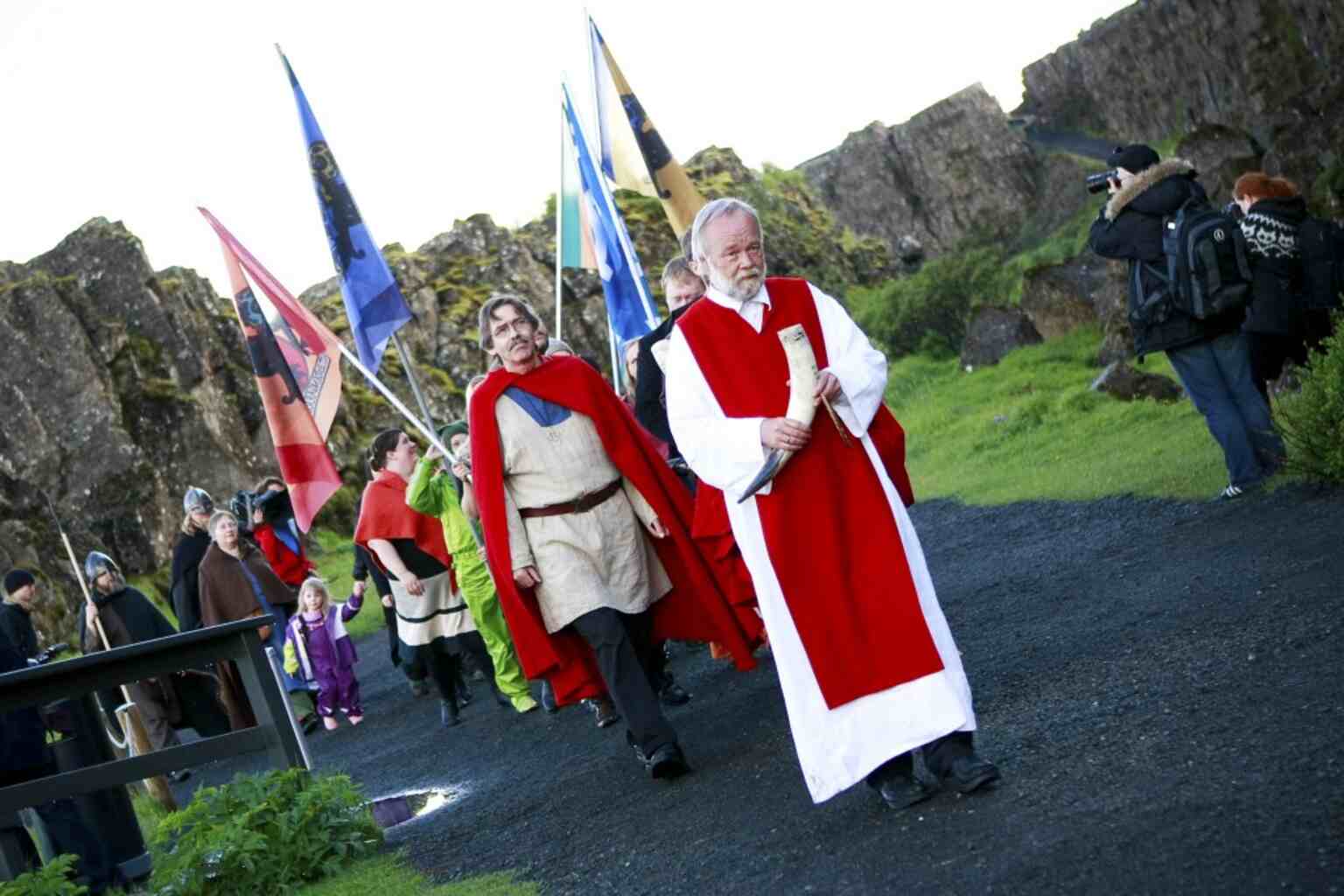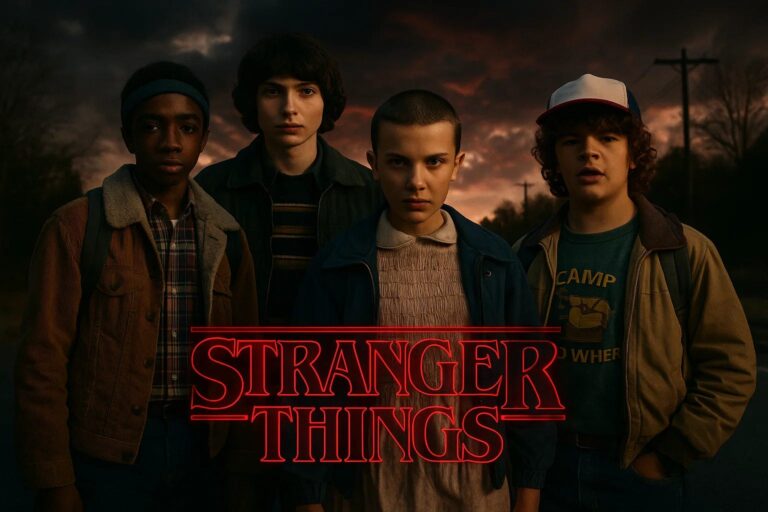Across shifting centuries, certain paths stay alive because people continue to return. Many are guided by books on Norse paganism that preserve fragments that never faded. To learn its ways today is to begin quietly, often with reading. Each page steadies what might otherwise feel inaccessible in the modern world.
Among countless books on Norse paganism, a few stand apart by balancing clarity with depth. They allow readers to approach without fear of being lost. The strongest texts never instruct alone; they invite, they open. Before meeting the titles themselves, it helps to see where Norse paganism began and how it differs from simple myth.
What Is Norse Paganism?
Norse paganism can look distant until you notice how fully it once shaped every part of life for the people of ancient Scandinavia. It was not a hobby of telling stories but a faith of gathering, offering, and remembering.
Origins:
- Emerged across Scandinavia before conversion changed its course.
- Passed from mouth to ear, where poetry preserved ritual, law, and worldview.
Myth vs. Religion:
- Norse Mythology: Heroic tales and cosmic battles recorded in prose and verse.
- Norse Paganism: Daily rites, ancestral veneration, and offerings that shaped community.
Books on Norse paganism offer vivid glimpses into Norse pagan rituals. Their practices that are used to seek favor, protection, and guidance. Their rituals turned belief into action, making the spiritual deeply felt and lived. They also explain Norse pagan beliefs about fate, afterlife, and the weaving of Yggdrasil, where gods and mortals shared a bound world. In these pages, seekers can see how old faith survives through fragments.
What Are The Best Books To Learn About Norse Paganism?
To make the journey less overwhelming, the following works are gathered into themes that reflect the heart of the path. For beginners and long-time readers alike, the right texts help transform myth into guidance. From here, we step into the works that keep these traditions alive in the present.
The Roots Of Norse Paganism
Let’s find out the origins of Norse Paganism through these books that delve into ancient myths, gods, rituals, and Viking traditions.
1. The Viking Way: Magic and Mind in Late Iron Age Scandinavia by Neil Price

“Belief is never abstract when it is lived in ritual and memory.”
The Viking Way is a great first book when it comes to Norse paganism for beginners. The author cleverly debunks Viking myths and shows how belief systems were not separate from society but its very structure. From shamanic practice to ritualized power, the book offers a detailed portrait of how the unseen world was made visible in everyday life.
- For readers seeking depth over surface-level retellings.
- Ideal for those curious about how rituals shaped Viking communities.
- For anyone drawn to understanding Norse gods and goddesses in context.
Why Start Here:
Though academic in style, The Viking Way remains a cornerstone for readers who want to step into authentic Norse spirituality, making it a valuable starting point even for those new to the subject.
2. Road to Hel: A Study of the Conception of the Dead in Old Norse Literature by H. R. Ellis Davidson

“The old poems tell us that the road to Hel was well-travelled.”
In Road to Hel, Ellis Davidson examines Norse concepts of death and the afterlife. He shows how burial traditions, myth, and memory intertwine. Road to Hel traces the presence of Hel and Valhalla, but also the quieter belief that ancestors lingered close. By linking texts with material evidence, the book offers a layered view of how the living related to the dead.
- For readers drawn to the spiritual meaning of burial practices.
- For those who want insight into the deities of the Norse pantheon as guardians of fate.
- For anyone fascinated by the spiritual imagination of early Scandinavia.
Why Start Here:
With its blend of evidence and narrative, Road to Hel is approachable for new readers. It ground them in the central place of death and remembrance in heathenry.
Living Traditions And Rituals
If you are someone who is interested in studying ancient traditions and practices, these sources on Norse Paganism would be just right for you; they discuss modern-day practices, including how people re-connect with old deities and enjoy celebrations and ceremonies based on ancient celebrations.
3. A Practical Heathen’s Guide to Asatru by Patricia M. Lafayllve

“Tradition survives when it is carried into the small moments of daily life.”
Patricia Lafayllve’s A Practical Heathen’s Guide to Asatru is both a primer and a companion, walking readers through the essentials of Asatru in a way that feels approachable. It explains ritual, ethics, and cultural background without overwhelming detail, giving beginners a steady foundation. She frames Asatru as something alive, practiced in homes and gatherings rather than only read about.
- For readers new to pagan paths and looking for guidance.
- For those who want to learn the structure of worship and offering.
- For seekers interested in the role of books on Norse spirituality in modern practice.
Why Start Here:
Gentle in tone but clear in detail, it provides a strong foundation for anyone starting to explore Asatru, showing how belief can translate into daily life.
4. Exploring the North Tradition by Galina Krasskova

“Every prayer spoken aloud is an act of remembering.”
Exploring the Northern Tradition by Galina Krasskova offers rituals that move between the intimate and the communal. The books shows how the northern tradition survives through repeated acts of devotion.
The book includes seasonal rites, invocations, and prayers, each written with enough structure to guide but also enough freedom to adapt. It encourages readers to engage directly rather than read passively.
- For readers ready to bring practice into their daily rhythm.
- For those curious about ways to honor gods, spirits, and ancestors in Northern mythology.
- For seekers hoping to experience mystical practices through hands-on devotion.
Why Start Here:
With its balance of structure and openness, Exploring the Northern Tradition invites beginners to take part in ritual as something lived, not distant, making it both practical and deeply personal.
5. Elves, Wights, and Trolls: Studies Towards the Practice of Germanic Heathenry by Kveldulf Gundarsson

“To the people of the north, the world was alive with neighbors both seen and unseen.”
Gundarsson presents a study of elves, wights, and trolls, figures who shaped the imagination and spirituality of early Scandinavia. He shows how communities treated these beings with respect, weaving offerings and customs into the fabric of daily life. The book situates them as essential to understanding the animistic foundation of the northern worldview.
- For readers intrigued by beings who dwell outside the main pantheon.
- For those who wish to see folklore in conversation with ritual.
- For seekers drawn to Norse traditions that blend myth, land, and spirit.
Why Start Here:
Elves, Wights, and Trolls: Studies Towards the Practice of Germanic Heathenry opens a path for beginners to explore how tradition lived through respect for these lands and its spirits, enriching the broader picture of Norse practice.
RELATED READING: 11 Best Norse Mythology Books
Myth, Story, And The Gods
The below books on Norse paganism bring Ancient Norse myths and stories to life, keeping the vitality of Norse mythology alive through generations and inviting us to their world.
6. Our Troth (Vol. 1: History and Lore) by Kveldulf Gundarsson

“The old stories live best when they are studied with patience.”
Our Troth, Volume One, focuses on history and lore, pulling together scholarship, translations, and community knowledge into a single work. Gundarsson and his collaborators cover myth, culture, and worldview with impressive depth, making this book as much a reference as a guide. It is a serious work, but written to remain usable rather than purely academic.
- For readers who want context as well as a story to guide their understanding.
- For those who want a book to study over time.
- For seekers ready to deepen their understanding of myth and history together.
Why Start Here:
Our Troth (Vol. 1: History and Lore serves as a cornerstone for study, giving beginners not only information but also direction on where to continue learning.
7. The Rites of Odin by Ed Fitch

“Every rite reflects the great tree, where all worlds are bound together.”
The Rites of Odin by Ed Fitch presents a collection of rituals and ceremonies inspired by the northern tradition, written with accessibility in mind. While some elements reflect modern adaptation, the book introduces readers to the structure of ritual, invocations, and seasonal celebrations. It highlights how the cosmology of Yggdrasil influences the way rituals are organized and understood.
- For readers who want a beginner-friendly set of rituals followed by Norse practitioners.
- For those who want to see how cosmology connects with Norse Pagan practice.
- For seekers curious about using Yggdrasil as a framework for ceremony.
Why Start Here:
Approachable and creative, The Rites of Odin offers a practical way for beginners to experiment with ritual while learning about the larger spiritual map of Norse belief.
Modern Paths Of Pagan Practice
From books to culture and religion, everything gets misreptesented today. However, some contemporary authors have maintained authenticism in their Norse paganism approach. Take a look at how they blend ancient traditions with new insights on Norse paganism.
8. The Asatru Community: A Beginner’s Guide to Heathenry by Erin Lale

“A path is easier to walk when someone lights the way ahead.”
Erin Lale’s The Asatru Community provides a straightforward overview of Asatru, explaining its gods, rituals, and values in language that feels welcoming. Unlike dense scholarly works, it focuses on clarity and accessibility, showing how the tradition is lived by communities today. It is an introduction that favors practice over theory, helping readers feel grounded from the start.
- For readers who want a no-nonsense guide to heathenry.
- For those who care about understanding community as well as personal faith.
- For seekers who want guidance from one of the best Norse paganism books available today.
Why Start Here:
The Asatru Community makes the first steps into heathenry less intimidating, giving readers a simple and reliable foundation to build on.
9. True Hearth: Finding Spirit in the Heart of the Home by James Allen Chisholm

“The spirit of a tradition lives in kitchens, hearths, and the stories we carry inside them.”
Chisholm’s True Hearth emphasizes the household as a sacred center, teaching readers how to build rituals around everyday life. From honoring the dead to marking seasonal changes, the book shows that devotion can grow from simple, repeated gestures. It argues that faith survives when it is woven into family and memory rather than kept apart.
- For readers who want to bring spirituality into the home.
- For those who wonder, is Norse paganism still a thing? and seek an answer in daily devotion.
- For seekers who value intimacy and tradition more than grandeur.
Why Start Here:
True Hearth helps beginners see that the northern tradition is not only practiced in temples or gatherings, but also in the spaces where life actually happens.
10. Asatru: A Native European Spirituality by Stephen A. McNallen

“Belief becomes meaningful only when it finds a place in daily life.”
This book introduces Asatru as a living spirituality, rooted in the gods and myths of the north yet carried into the modern day. McNallen explains ritual, devotion, and ethical grounding, while also reflecting on what it means to belong to a tradition that values both heritage and responsibility. Asatru reads more like guidance than theory.
- For readers who want faith presented in a straightforward style.
- For those curious about the role of community in practice.
- For seekers interested in Norse pagan beliefs framed as a way of life.
Why Start Here:
Beginners will find a text that is honest and direct, making the first steps into Asatru feel less distant and more achievable.
Conclusion
Every tradition is carried by the stories and practices that endure, and by the people willing to learn them. The books on Norse paganism gathered here show that the faith is both history and lived experience, bringing together myth, ritual, and devotion. Each reader may find a different starting place, which is the strength of a tradition with many doors. Have you read any of these works? Share your reviews and suggestions so the list continues to grow.
FAQs
1. Do Norse pagans still exist?
Yes, Norse pagan communities are active today, mainly in Scandinavia, the United States, and parts of Europe.
2. Can anyone practise Norse paganism?
Yes, with sincerity and openness, anyone can practise Norse paganism by starting with reading, offerings, and seasonal observances.
3. What is the best book on Norse paganism for beginners?
A helpful starting point is A Practical Heathen’s Guide to Asatru by Patricia M. Lafayllve.
4. Is Norse paganism the same as Ásatrú?
Ásatrú is part of Norse paganism, but the faith includes more paths.




